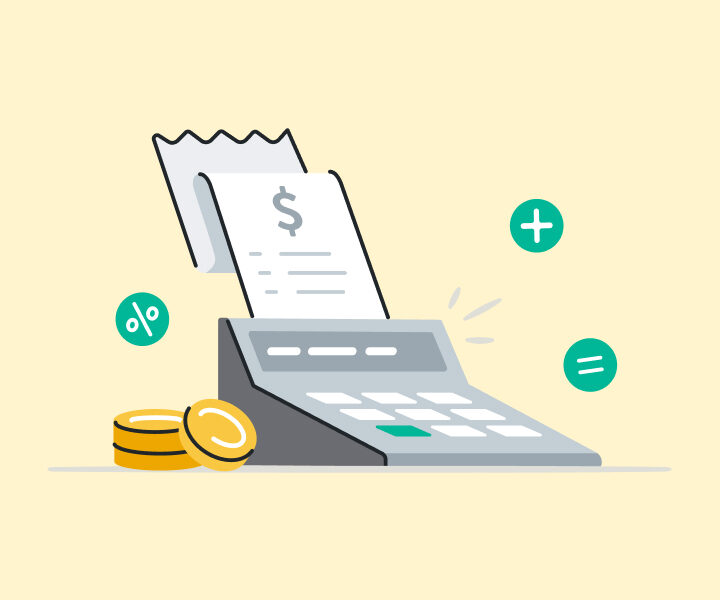What is a Partnership Information Return? All Your T5013 Questions Answered
TurboTax Canada
December 18, 2023 | 3 Min Read
Updated for tax year 2025

Confused about which forms you need to fill out for your business? Truth be told, there are at least a dozen forms or schedules to potentially file at tax time.
One easy place to start is with your partnership status. If you’re in a partnership, the first form you’ll want to consider is a T5013 Partnership Information Return. While the form doesn’t help you calculate tax liability, it’s important because it gives the Canada Revenue Agency (CRA) basic financial details about your company’s relationships with its partners.
Here’s an intro to the T5013 slip, when it’s required, and an example of how you might report one on your tax return.
Key Takeaways
- Some partnerships have to file a Partnership Information Return, which provides details of how partnership proceeds are divided.
- Typically, only partnerships that have more than $2,000,000 in worldwide absolute revenues and expenses have to file a T5013. But there are some exceptions.
- Partners must claim their portions of the partnership’s expenses and revenues on their own returns.
What is a Partnership Information Return?
A Partnership Information Return, or T5013, is a tax form that’s used to report how a partnership allocated its net income, losses, and other revenue or liabilities among members during the previous fiscal year.
For example, let’s say you and your brother always dreamed as kids of owning a chain of ice cream shops and finally made your dream come true. At the end of your fiscal year, if you meet the eligibility criteria for filing a T5013, you’ll need to list how the revenue or liabilities are allocated between you. If you own 40% of the business and your brother owns 60%, and you took out a $10,000 loan in a given year, then you would be allocated $4,000 and your brother would be allocated $6,000 of that debt.
Who is required to file a T5013?
Partnerships are a type of business in which individuals or corporations carry out business together but, in co-participating in this commercial activity, do not form yet another separate legal entity together. So, if this chain of ice cream shops is incorporated as a separate legal entity owned by a business you own and a business he owns, you wouldn’t have to file a T5013 because you would be filing a tax return for that jointly held corporation.
Because a partnership isn’t a separate entity, the participating individuals and corporations pay taxes on income earned via the partnership through their own tax returns. A T5013 form reports how the partnership’s income and losses are divided among all partners, so they can include those amounts in their respective tax filings.
That said, not all partnerships need to file a T5013. Here’s how to know if you need to file:
- If your partnership has more than $2,000,000 in worldwide revenues plus absolute expenses for the year, or if it has more than $5,000,000 in worldwide assets, you must file a T5013. For example, if your partnership has $3,000,000 in revenue and $3,000,000 in expenses, its total absolute revenue plus expenses is $6,000,000. This number is above the threshold and, as a result, the partnership must file this form.
- However, there are two exemption to this rule—farming partnerships made up of individuals and partnerships made up of member registered or entitled to be registered under the Indian Act who conduct all business at a permanent establishment on a reserve do not have to file this form.
- If one of your partners is a corporation or a partnership, you have to file a T5013 regardless of your revenues or assets. This rule also applies to farming partnerships.
- You must also submit the T5013 slip if your partnership invested in flow-through shares. (Flow-through shares are a type of share that mining, petroleum, and certain types of renewable energy companies can issue to fund exploration and development activities that provide tax benefits to the purchaser).
- If you are otherwise not required to submit a Partnership Information Return (T5013) but the minister of revenue requests one anyway, you must submit it.
- If you are in a partnership that has to file a Partnership Information Return, every member of that partnership will need to file their own form.
Do you need to report the T5013 on your tax return?
If you are required to submit a T5013, you’ll need to report data on the partnership as a whole as well as data regarding each partner’s share of revenue and expenses.
As an individual, you must then report your partnership income on your personal income tax return. Use T2125 Statement of Business or Professional Activities to outline your other revenue and expenses, and then transfer your share of the partnership revenue expenses to your income tax return as prompted.
When filling out your T2125, include only your portion of the partnership’s revenues and expenses. For example, if you have $100,000 in revenue from selling all that ice cream with your brother and own 40% of the partnership, you’ll report $40,000 in revenue on your return and your brother will report the remaining $60,000 on his return. Then, you’ll both divvy up expenses in a similar fashion.
You should also report capital losses from your partnership by dividing them the same way. Namely, take your portion of the partnership’s capital losses and report only that amount on your return. Then, subtract the losses from your capital gains, regardless of whether the gains are associated with the partnership.
File with confidence
Get advice and answers as you go, with a final tax expert review before you file.
Get StartedRelated articles

© 1997-2024 Intuit, Inc. All rights reserved. Intuit, QuickBooks, QB, TurboTax, Profile, and Mint are registered trademarks of Intuit Inc. Terms and conditions, features, support, pricing, and service options subject to change without notice.
Copyright © Intuit Canada ULC, 2024. All rights reserved.
The views expressed on this site are intended to provide generalized financial information designed to educate a broad segment of the public; it does not give personalized tax, investment, legal, or other business and professional advice. Before taking any action, you should always seek the assistance of a professional who knows your particular situation for advice on taxes, your investments, the law, or any other business and professional matters that affect you and/or your business.









